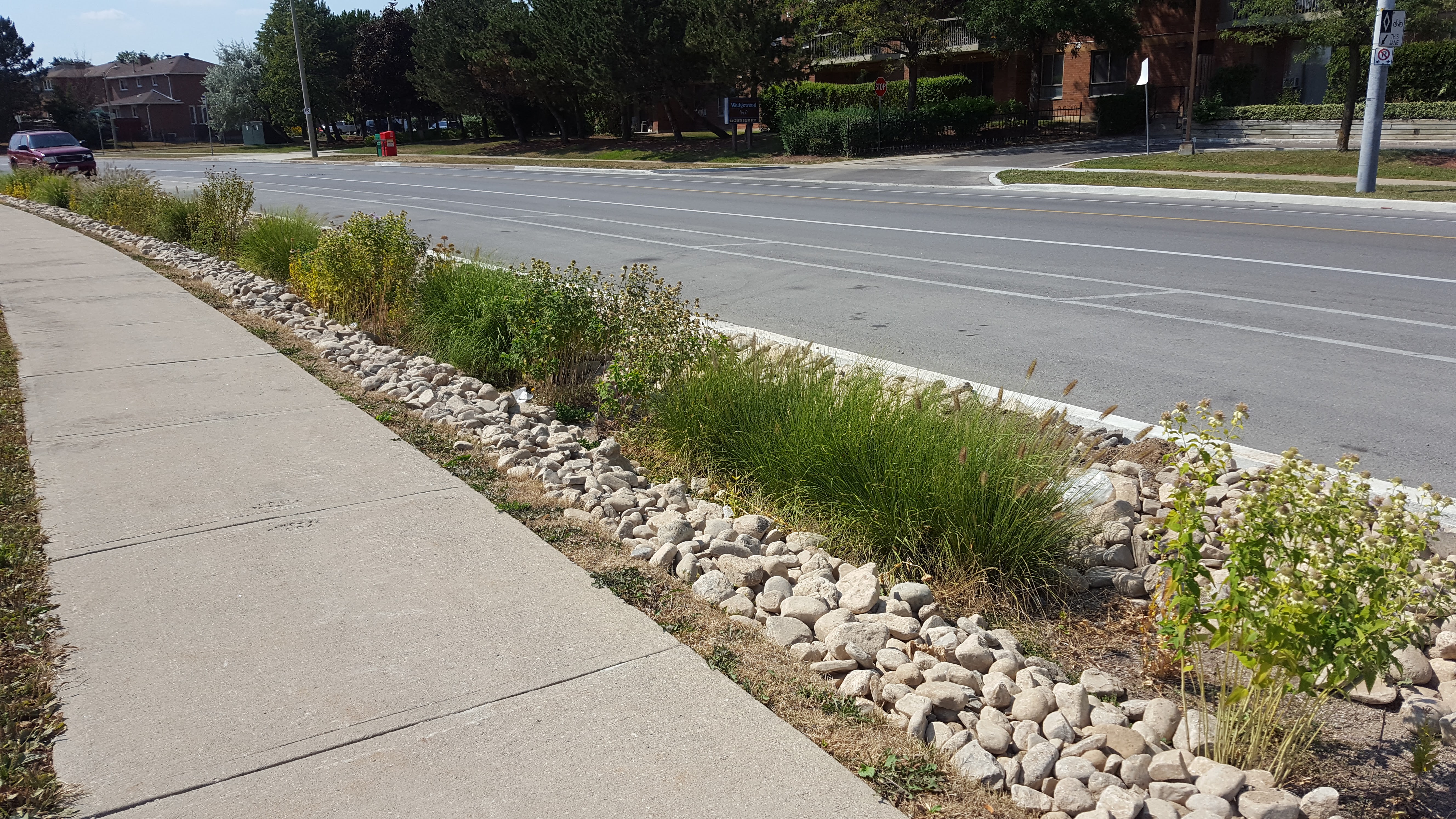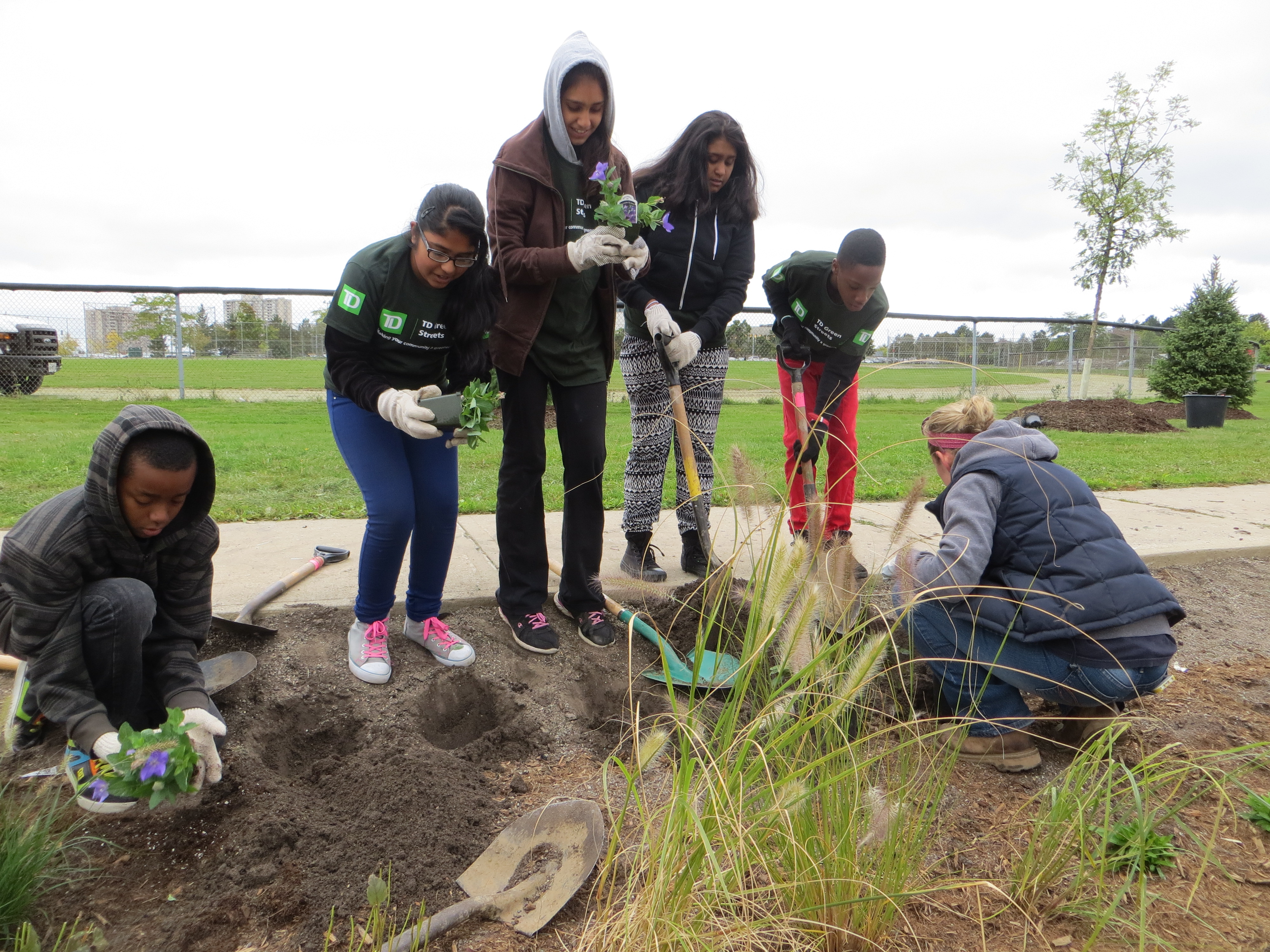Understanding and Assessing Impacts
The main climatic impact that this project aims to address is increased urban runoff and water quality concerns as a result of increasing precipitation and extreme precipitation events. This climatic impact is exacerbated by the prevalence of impervious surfaces throughout the region and ongoing changes in land-use which converts previously pervious surface to impervious. Increased overland flooding is the main risk associated with heavy precipitation and has many impacts on the local socio-ecological system (e.g., damage to infrastructure and private property, human health and safety concerns, and aquatic ecosystem health concerns). There are also opportunities to achieve co-benefits as part of climate action projects that address water, including improvement of green infrastructure, urban forest and neighbourhood aesthetics. In addressing this issue, the City of Brampton installed its first bio-filter swales along County Court Boulevard as part of planned road resurfacing in 2014. The integrated project was able to access new funding and draw on existing budgets, demonstrating a strategic financing model and interdepartmental coordination. The primary role of the bio-filter swales is to collect and clean storm water run-off from County Court Boulevard before it enters the Etobicoke Creek.



